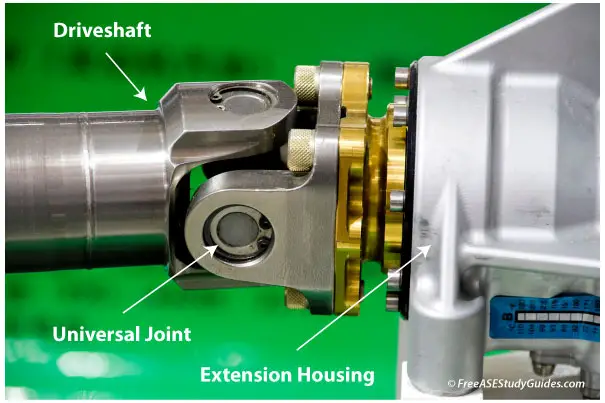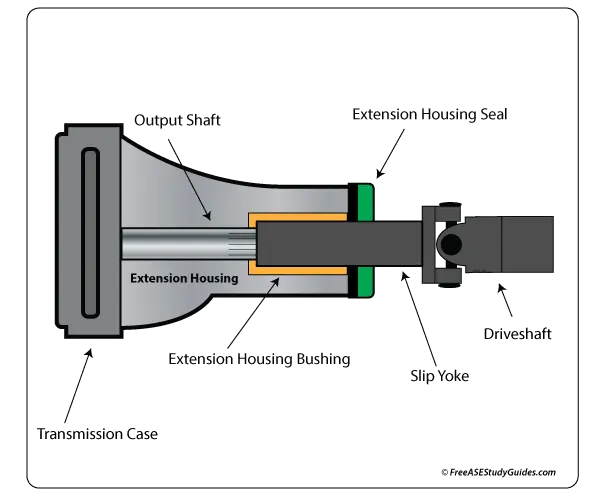The Extension Housing Bushing

Longitudinal transmissions have an extension housing protecting the output shaft at the back of the transmission housing. There's a gasket between the two machined surfaces. If the extension housing has minor nicks and burrs on its mounting surface, remove them with a file. If it's warped beyond specifications or severely damaged, replace the housing. Check with the manufacturer's specifications before making a decision. Check the mounting surface with a straightedge and a feeler gauge.
The housing contains the output shaft and, most often, the vehicle speed sensor. The extension housing bushing is press-fit into the housing. Then, the extension housing seal is installed to contain the transmission's fluid. The extension housing is sometimes called the tail housing.

A worn extension housing bushing can cause driveshaft vibrations. A binding u-joint or case misalignment can cause this accelerated wear. Check for sagging mounts or anything that can cause transmission misalignment. Move the slip yoke up and down; there should be little play. Check the slip yoke for pitting; pitting causes premature wear and a leaking seal.
These bushings may contain an oil hole that must match the housing's oil supply passage. Never deprive a spinning shaft of its lubrication. Brass is a soft metal, so the bushing wears before the slip yolk.